Click on each project to learn more.
Alteryx Project Team
Partner: Alteryx

Haoyuan Zhang

Sahil Somani

Wenpeng Cai
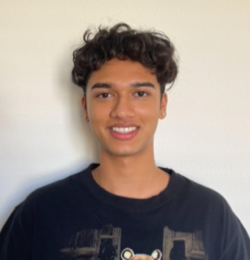
Utsav Parajuli

David Xiu
Project Overview: Alteryx wants to create a report on its yearly greenhouse gas emissions through a sustainability report. In order to do so, they must gather data from all sources of greenhouse emissions in the company, then organize the data into their respective categories and create a visualizer. Our project is focused on automating the process of sorting and analyzing the data and creating a visualizer that can be used repeatedly each year. Currently, this data analysis is done manually. Last year, Alteryx brought in consultants who sifted through all the data and used Excel to generate the needed reports and visualizations. While this worked, it is not feasible for Alteryx to hire consultants every year to do this work. We plan to move away from the current Excel approach and use Alteryx Designer and Tableau to automate this report generation. This will naturally be much better than the current solution because everything will be automated. To generate the reports in future years, everyone will need to upload the new year’s data to our Alteryx workflow.
Del-MenuAI
Partner: Delphi Display Systems

Yunfan Qiao

Daniel Soto

Kaled Ismael
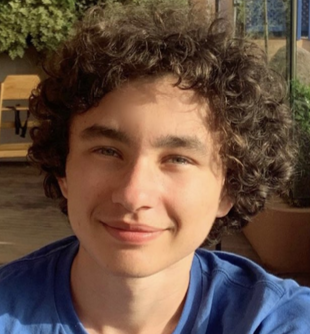
Nael Belhaj Haddou

Zixiao Liu
Project Overview: The problem we want to solve is improving the customer’s experience while ordering at a restaurant drive-thru (which contributes to 70%~80% of the total income) based on a customer’s preferences. An important aspect of the project is saving the customers time and providing them with a customized menu that takes into account their preferences, past orders, dietary restrictions, and environmental factors. This would lead to increase in user satisfaction, increase customer loyalty, and increase of sales for our clients. As of today, this problem is relatively new since there has not been a solution to improving the experience when a customer orders in the drive-thru or inside a restaurant. We are exploring how to solve this issue by implementing machine learning and AI techniques to learn from users’ preferences, previous data, and future user transactions. For each item, we don’t just take into account the ingredients of it, but also the nutrition facts such as sodium, fat, and calories. The solution would be to build and optimize two relational databases one for user preferences and the other for restaurant menu items using PostgreSQL. The machine learning model will use TensorFlow Keras. In addition, build a machine learning model that weighs menu items based on user preferences and past transactions at the specific restaurant. Our idea for the development of this project is first to create the project requirements document, then investigate the previous team’s project findings (database & model), work with the database and company’s training data, then finally work on a machine learning model that takes into account preferences and user data.
Firebird
Partner: Firebird

Mason Read

Sean Browne

Sean Devine
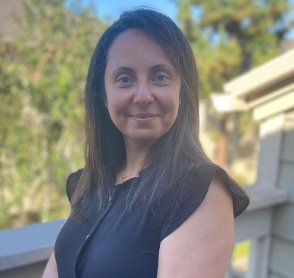
Britney Karima Berrada

Yenina Lei Lima
Project Overview: Excel is the leading tool for financial spreadsheets. However, errors are extremely common in these spreadsheets, costing companies billions each year. F1F9, a financial modeling consulting firm estimated that 88% of all spreadsheets have errors in them, and 50% of spreadsheets at large companies contain material defects. These faults stem from human error as well as Excel’s shortcomings. Creating safer, more standardized financial modeling software will not only save companies billions and make analysts’ jobs easier, but also aid regulators in preventing fraud. Today, there are many different spreadsheet applications, ranging from Excel, to Google Sheets, and many similar products. All of these different spreadsheet products solve a specific niche of the spreadsheet market, where Excel is the standard for large corporations, Google Sheets provides seamless online collaboration. However, they are all similar in their fundamental structure, where cells are viewed individually, and formulas and functions are combined with data in the same sheet. None of the options on the market currently seek to address the issues which arise from that principle, and this fact is the driving innovation behind Firebird. Firebird will separate data from the formulas and functions to be performed on it, to minimize overwriting and errors, and ease the export of logic to other Firebird users. To complement this new scheme, several other features will be put in place to address flaws with current spreadsheet products, such as tampering by limiting certain file accessibility. In this way, Firebird seeks to bring a new solution to the market, which addresses many of these flaws.
GameIn
Partner: None

Geo Li

Vikasni Kalahasthi

Vanessa Tang

William Mejia

Johnny Dinh
Project Overview: The eSports industry is a fast-growing market and there isn’t a professional platform to connect amateur eSports teams with sponsor companies. Amateur eSports teams don’t share the same connections that other famous teams have to conduct transactions, and creating and signing contracts directly can be a daunting task. The risky, unprotected trading environment makes it difficult for young, inexperienced eSports players to break into the industry if they aren’t already members of a well-established brand or team. There is also a lack of understanding between the business world and the gaming world which makes it difficult for sponsors to gauge who they should be investing in and vice versa. Currently, there are no platforms that are catered to small and growing esports teams. Amateur teams must gain enough fame to get noticed by a company, or email companies directly in hopes of getting sponsored. With GameIn, businesses and players will be able to find opportunities to invest and collaborate with one another in a secure setting. GameIn will also provide a hub where businesses will easily be able to view the strengths of each team in an easily digestible format free of gaming jargon. GameIn enables a more professional and secure trading environment to protect eSports players’ and organizations’ interests. This is a huge project with various groups (e.g., Informatics UCI team, USC Capstone team) working on different tasks, and the job our sponsors have given to us is to focus on building the backend for the first phase, a profile database to hold each team “stats”. Once that is completed, we will work on an authentication system for the platform. Finally, if there’s time, we will make progress on the Revenue Model provided to us by the sponsor. The first milestone for this project is to set up the backend environment and standardize the database structure. We will have to first look at the UML diagram and make a relational database based on that information.
NASA Psyche Mission: Journey to a Metal World
Partner: NASA
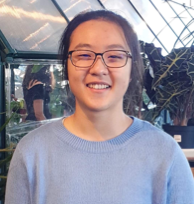
Ching-Ting Tsai

Jonathan Chen

David Nguyen

Ryan Sue
Project Overview: We want to create a new and innovative web-based game to engage users in the excitement of the Psyche mission and help them feel connected to it. This is important because we want to foster curiosity in our users and support leading-edge scientific voyages. In the past web games have been made to generate support for NASA missions using the Unity game engine. Our project will innovate further by using the updated game engine and up-to-date information about NASA’s latest project to create another game that will continue fostering the next generation’s curiosity and interest in NASA’s missions and space. We will be collaborating with the people working on the Psyche mission to design a web-based game. Our main form of communication will be through Slack, Discord, and bi-weekly Zoom meetings with the sponsor to make sure that we are building something that the Psyche team wants. For development, we plan to use the Unity game engine, GitHub, and Trello. We will finish up a creative web-based game using the Unity game engine to engage our users and learn more about the Psyche mission. Our final demo will be a short run-through of our game.
PhoenixMed
Partner: Pegasus One

Carlos Delgadillo

Leon Yao

Anh Nguyen

Anh Vo
Project Overview: The project focuses on the investigation of the behavior patterns of persons who are going through opioid addiction and using AI to predict and take action to prevent or reduce any withdrawal symptoms or relapse. A similar project was done 5 years ago by Pegasus, but there were difficulties in collecting enough data to make the system to accurately predict the outcome, so the previous software could only predict for a specific subject based on the manual data provided by the subject. Today, the project is aimed to help clinics to have software which they can use to analyze the behaviors of their patients so that they do not need to build it from scratch. Therefore the goal is to use enough data to support the AI and make it more accurate and practical. If the project succeeds, the AI can possibly analyze and predict the relapse and proactively advise interventions to help the doctors or the patients, which would help patients find relief from relapse and recover more quickly. There are currently many applications targeted at helping clinics treat opioid addiction and at supporting patient recovery. However, none of these applications are able to predict opioid relapses/ withdrawals. These applications mainly focus on providing resources and supporting treatment. On the other hand, there have been a large number of studies on opioid relapse prediction through the use of AI. These studies either train AI models based on social media data or patient data. This project aims to build a similar AI model that can accurately and efficiently detect relapse or withdrawal symptoms and embed this AI into the software so that clinicians can use it in a real-world setting.
Project Kumamon
Partner: None

William Hsu

Chloe Chau

Karen He
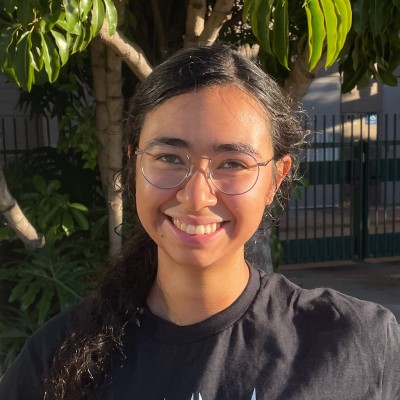
Athena Rubio
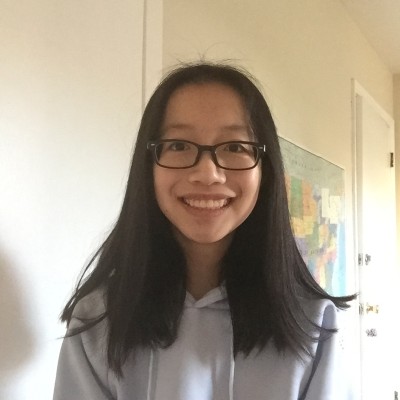
Junyan Wu
Project Overview: Retailers sell products produced by manufacturers. The retailers have to pay back the manufacturers the price that they sold. When the retailers have a promotion or a sale of a product, the retailers will pay the manufacturers less money than the original price. There is a discrepancy between the original cost and the promotion cost. To keep track of the amount that the retailers have to pay, retailers have to compare the product they sold with the manufacturers. Currently, the process of uploading the document files is manual. The problem we want to solve is to automate the process of uploading files. Manufacturers currently have to manually search and download documents from each retailer before uploading them to their portal to have them analyzed. This process takes up a good amount of time and labor. Our project aims to automate this process, saving manufacturers ~30% of the time usually taken to get a document from a retailer and analyze it. We want it to be easily expandable as retailers may be storing their documents in different areas.
Streamlining Crypto-Currency Management: A Semi-Custodial Wallet Application
Partner: SphereOne
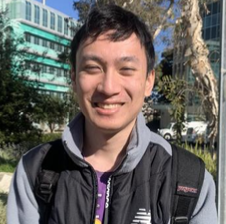
Ralph Parin

Emmett Blansett

Ryan Luong

Bryan Phung
Project Overview: Crypto wallets today use public and private keys. The main point of contention with today’s crypto wallets is private key custody. In a custodial wallet, the user is given an illusion of ownership while in actuality, the private key, and subsequently full control over a user’s funds, belongs to the company. In this custody model, if the company holding your key is breached and your key is compromised, your funds can be hijacked. Allowing a company to have full control over your private key comes with other issues as well. For example, in the case of FTX, the company was able to access their users’ funds without their knowledge as FTX held the private keys rather than the customer. On the other end of the spectrum, there are self-custodial wallets like MetaMask. In this system, you alone hold and control the private keys and are subsequently solely responsible for your own funds. Our project aims to take a middle-ground approach that emphasizes both security and flexibility while solving the custody problem by using a Multi-Party Computation or MPC wallet. This type of wallet is semi-custodial in that it uses multiple key shards to validate each transaction. These key shards can vary in amount. For example, a user can hold the majority of shards and the company holds a smaller fraction. When making a transaction these keyshards are combined to make a key in order to sign a transaction. The importance of this is that it prevents unwanted transactions as it adds this layer of shared responsibility in that no single person can authorize a transaction without the other party’s consent. As of now crypto-currencies are in a niche spot for the average user. With news like the FTX crisis where lots of users had their funds taken without their knowledge crypto is in a dire scenario of lacking user’s trust. However, with the creation of our project, it can alleviate this public distrust against cryptocurrencies. The systems we are designing will encourage the average user to have some faith in cryptocurrencies as they can be assured that their funds will not be taken without their permission, and in the event, they lost their wallet(s) it can be recovered even in the case of a lost device. Currently, crypto transactions are very susceptible to malintent transactions as these transactions are very hard to decipher however, our project will counter this issue as it will auto-decipher these transactions thus allowing them to be easily read by any human.
UCI OIT
Partner: None

Justin Chen
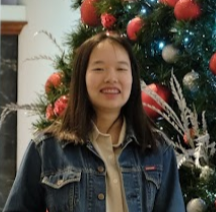
Yi Ling Chiu

Chris Ruan

De Ren

Cedric Kwong
Project Overview: Our group will analyze and visualize personal health, future trajectory, and recommendations through data. Our client is hoping we can utilize his data to build a personal health model from which we can provide actionable insights to improve the users’ health. The majority of applications today only collect data and present data; it does not provide a suggestion for the users to improve their lifestyle. One of our main objectives is to find novel linkages in food-nutrition & sleep or food-nutrition & exercise that can be understood, visualized, and potentially turned into actionable personalization and nudging strategies.
UCI Social Sciences App
Partner: UCI Social Sciences

Aidan Fitzpatrick

Adithya Anandsai
Krishnan

Jason Wong

Blake Keeler

Julian Puffer
Project Overview: We plan on improving the user experience of Social Sciences students in their interactions with college materials. At the moment, different offerings of the school are scattered across many websites and confusing to access, and our app will work to centralize these sites in one convenient app. A major intention of this application is to increase accessibility, with one example being UCI’s large international student population, and another being the inflow of new students who go to SPOP. The application will streamline this knowledge. Currently, the only centralized platform for the UCI School of Social Sciences is the website (https://www.socsci.uci.edu/). This website has not been updated in around 5 years and has been described by many students as outdated. As UCI’s largest school, a more straightforward and easily accessible mobile application must be developed to not only store the current information on the app, but to also allow the Social Sciences department to expand on it in the future.